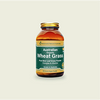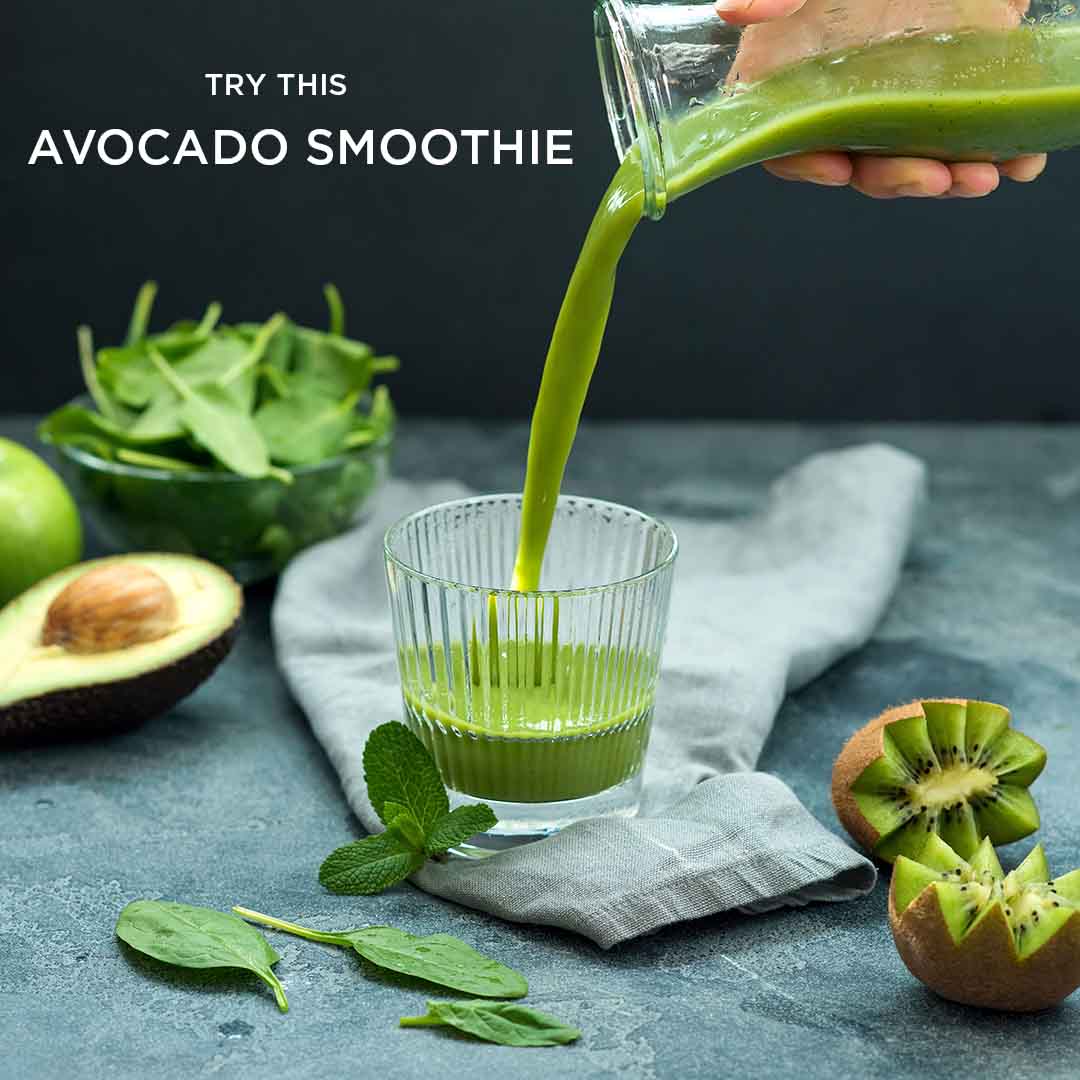Healthy hair and skin is something many people go to great ends to achieve. The beauty industry has come up with endless products as supposed solutions to these natural desires. It made a staggering revenue of US$534bn globally in 2022 alone (Verma, 20221). Despite the massive amount of money being dedicated to these issues, results from the beauty industry are decidedly mixed. A simple explanation for this is that healthy looking skin and hair come primarily from being a healthy individual, rather than from topical products that can be used to cover up an issue. This perspective explains the recent uptick in popularity of foods and supplements that support overall health, and can lead to naturally healthy hair and skin (Faria-Silva, 20202). Chlorella is one prominent example of a plant "superfood" being used both in products and as a supplement to support healthy looking hair and skin with impressive results (Kim 20203).
How Nutricosmetics Became The Latest Trend In The Beauty Market
Both skincare and haircare are complex topics, but since skin is a vital organ essential for human life, the topic is much more nuanced. Skin functions as a barrier between harmful substances in the outside world and the protected inner world of the body (Walters, 20024). Just below the surface of the skin are immune cells, blood and lymphatic vessels, hormonally active tissues, and much more (Walters, 20024). It then makes sense that the health of all of these bodily systems may affect both the health and appearance of the skin. Most importantly, the network of immune cells that reside in skin tissue means immune function can play a direct role on the health and appearance of the skin. When the immune system is weakened, the skin is much more prone to inflammation, hypersensitivities, and acne causing bacterial imbalances (Nguyen, 20195). Chlorella can play an important holistic role in healing these issues from the inside out by supporting optimal immune function (An, 20086).
What Does Your Immune System Do For Your Skin?
Nutritional deficiencies can also play a major role in the appearance of the skin. Vitamin C, A, E, D, zinc, several B vitamins, as well as certain fats and proteins are all known to play a role in skin health (Schagen, 20127). Chlorella is an excellent source of nearly all of the nutrients important for maintaining the health of the skin (Tokusoglu, 20068). The body requires the physical building blocks of amino acids, as well as synergistic vitamins and minerals that take part in the biochemical processes that build healthy skin components like collagen (Barchitta, 20199).
12 Best Foods For Healthy Skin
Nutrition And Your Skin Health
In addition to the nutrient support chlorella offers for collagen production, it can help contribute to skin health by positively affecting blood and lymphatic health (Rezvani, 201210, Bito, 202011). Both of these vascular systems are used to help deliver essential nutrients and other bioactive substances to skin tissue, as well as to help remove harmful waste products. Blood contains red blood cells that carry oxygen throughout the body to which fuels cellular repair and growth. Chlorella provides an impressive amount of iron which is necessary for the red blood cells to deliver oxygen (Bito, 202011). The lymphatic system also moves fluid throughout the body, and is one of the body's main sources of detoxification (Skobe, 200012). Chlorella contains iodine which is thought to support lymphatic movement and help the body clear harmful substances that could potentially lead to visible skin issues (Rezvani, 201210). Chlorella is also a natural detoxifying food that could potentially lessen the load on a stagnant or overworked lymphatic system, and reduce resulting skin irritations (Lee, 201513).
Does Great Skin Start In The Blood?
The Lymphatic System And Skin Health
Hair health has a significant overlap with skin health, though there are differences. Since hair does not contain live cells, the health of the scalp is what determines the health and appearance of hair. The scalp contains hair follicles for hair to grow from, and this process requires nutrients which are delivered by small local blood vessels (Sinclair, 200714). Hair is often quick to become affected by nutrient deficiencies since hair growth is an accessory feature. It's not essential for survival, so energy and nutrients will be devoted to more important bodily functions first if there is a shortage (Sinclair, 200714).
Simple Secrets To Healthier, Fuller, Shinier Hair
The nutrients that support good skin health and similar to those needed for hair health. B vitamins, iron, omega 3s, and even adequate protein supply are all particularly important for hair (Finnerm 201215). Hair growth supplements are a commonly used product which tend to have large synthetic doses of these nutrients. Chlorella can serve as a more effective food alternative to supplements since these nutrients are in a more bioavailable form, with more natural ratios (Bito, 202011). Some of these nutrients are particularly difficult to ingest adequate amounts of on vegetarian or vegan diets, which means people following those diets may have even more to gain from chlorella consumption (Merchant, 201516).
Best Food For Hair Growth: What To Eat, Drink, And Avoid
The links between healthy shiny hair, clear glowing skin, and overall health are undeniable. Approaching these beauty concerns from a holistic point of view may lead to longer lasting results than relying on products, and provide a plethora of other benefits alongside. Supplying the body with nourishment from the inside out from chlorella consumption seems to be an affordable, effective, and well rounded solution to supporting natural health and beauty.
References
-
Ali, S. H., & Hussain, Z. (2022). The role of oxidative stress in skin aging and skin diseases. In A. Alim, H. B. Zulfiker, & M. A. Hosen (Eds.), Oxidative Stress in Human Health and Disease (pp. 269-288). Springer. https://doi.org/10.1007/978-981-16-8403-6_14
-
Binic, I., Lazarevic, V., Lausevic, M., Mojsa, J., & Sokolovic, D. (2019). Skin ageing: Natural weapons and strategies. Evidence-Based Complementary and Alternative Medicine, 2013, 827248. https://doi.org/10.1155/2013/827248
-
Choi, J., Lee, E., & Lee, H. (2007). Hair shaft damage from heat and drying time of hair dryer. Annals of Dermatology, 19(4), 201-205. https://doi.org/10.5021/ad.2007.19.4.201
-
Walters, K. A., & Roberts, M. S. (2002). Structure and function of the skin. In J. F. Nash & K. A. Walters (Eds.), Dermatological and Transdermal Formulations (pp. 1-39). CRC Press. https://doi.org/10.1201/9780203908270
-
Lee, H., Lee, J. H., & Gorden, T. (2019). Analysis of cosmetic ingredients that affect skin barrier function. Toxicological Research, 35(2), 131-141. https://doi.org/10.5487/TR.2019.35.2.131
-
Park, M. J., & Yoo, Y. M. (2008). Effect of antioxidant activity on the oxidative stability of hair cosmetics. Journal of the Society of Cosmetic Scientists of Korea, 34(2), 171-176. Retrieved from https://koreascience.kr/article/JAKO200835062475403.pdf
-
Saraf, S., & Kaur, C. D. (2012). Phytoconstituents as photoprotective novel cosmetic formulations. Pharmacognosy Reviews, 6(11), 1-14. https://doi.org/10.4103/0973-7847.95849
-
Swift, J. A., & Bews, B. (2003). The chemistry of human hair cuticle: A new analytical approach. Journal of Cosmetic Science, 54(4), 353-366. Retrieved from https://ift.onlinelibrary.wiley.com/doi/abs/10.1111/j.1365-2621.2003.tb09615.x
-
Szyszkowska, B., Łepecka-Klusek, C., Kozłowicz, K., Joźwiak, S., & Langner, M. (2019). The influence of selected ingredients of dietary supplements on skin condition. International Journal of Molecular Sciences, 20(5), 1119. https://doi.org/10.3390/ijms20051119
-
Talaei, S. (2017). The effect of hydrolyzed keratin and magnesium ascorbyl phosphate on hair. International Journal of Advanced Biological and Biomedical Research, 5(2), 52-58. Retrieved from https://ijasr.srbiau.ac.ir/pdf_5589_7a8
-
Tang, S. C., & Yang, J. H. (2019). Dual effects of alpha-hydroxy acids on the skin. Molecules, 24(9), 2524. https://doi.org/10.3390/molecules24091524
-
Trueb, R. M. (2014). Oxidative stress in ageing of hair. International Journal of Trichology, 1(1), 6-14. https://doi.org/10.4103/0974-7753.66903
-
van Zuuren, E. J., & Albusta, A. Y. (2014). Topical treatment of facial seborrheic dermatitis: A systematic review. American Journal of Clinical Dermatology, 15(2), 115-134. https://doi.org/10.1007/s40257-014-0068-6
-
Westgate, G. E., Botchkareva, N. V., & Tobin, D. J. (2007). The biology of hair diversity. International Journal of Dermatology, 46(2), 2-7. https://doi.org/10.1111/j.1365-4632.2007.03112.x
-
Wickett, R. R., & Visscher, M. O. (2012). Structure and function of the epidermal barrier. American Journal of Infection Control, 40(4), S98-S110. https://doi.org/10.1016/j.ajic.2011.09.018
-
Yoon, H. S., Cho, H. H., Cho, S., Lee, S. R., Shin, M. H., & Chung, J. H. (2015). Supplementing with dietary astaxanthin combined with collagen hydrolysate improves facial elasticity and decreases matrix metalloproteinase-1 and -12 expression: A comparative study with placebo. Journal of Medicinal Food, 18(7), 757-764. https://doi.org/10.1089/jmf.2014.3261




























